When we think of bats we usually imagine that they spend their days sleeping in caves or inside old churches and castles. This is part of our collective culture but it is not the usual thing. The reader will surely be surprised that of the more than 1,100 species of bats known (Simmons 2005), approximately half use plants or parts of plants for roost sites during the day (Kunz and Lumsden 2003). Within the groups of more interesting American bats is the genus Thyroptera. Bats of this genus have four suction cups that allow them to sleep glued to the leaves of plants of the genus Heliconia (Photo 1). But today we are going to talk about another group of bats that build their own shelters. Yes, you have read well; bats that build their own houses. If we think of other mammals it is not so surprising: consider beavers, for example. In the world, 22 species of house-building bats are known, four in Australia and Oceania, five in Africa, and 17 in the Americas (Rodríguez et all. 2007). Neotropical bats (belonging to the tropics of the American continent) are present in Luna Nueva and sometimes we are lucky to observe different species. Today we will talk a little more about them.
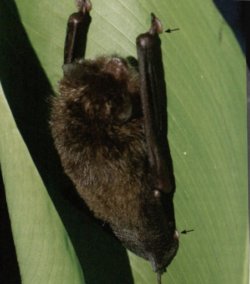
Photo 1. Thyroptera tricolor. Members of the family Thyropteridae have discs or suction cups on their wrists and ankles that allow them stick to the unfurling leaves that are used as roosts, Costa Rica (Rodríguez et all. 2007).
Bats’ constructions, on leaves that have been modified by cuts and bites, are known as “camping tents,” “Bats tents,” or simply “tents.” Neotropical species that use tents are mainly frugivorous, although some can also be fed on nectar, pollen and/or insect larvae (Gardner 1977). This means that they offer two main ecosystem services. First, they transport seeds, which facilitates the formation and development of the forest. Second, they help in the management of nutrients. They usually feed on fruits of trees or plants inside the forest and transport these nutrients to the clearings and areas where they sleep, allowing once again a faster development of the forest.
About the plants they use in America. Of the 17 species of neotropical bats that use tents, at least 12 occupy palms (Arecaceae). The family Heliconiaceae is the second, used by nine species of bats. Tent bats also use the family Araceae, whose leaves serve as refuge for eight species of bats. There are species of bats that can use different species of plants, while others are stricter and can only use one or two species. Bats have specific requirements to build their homes. For example, they not only choose the species, the size, and the shape of the leaves but also select the microhabitat that surrounds them. What is known is that they often build several in an area to try to spend the days in different tents to reduce the chances of predation. That is why sometimes we find their tents empty. The most interesting variable is that it has been observed that they prefer the leaves that are found near hornets. It is believed to offer additional defense against monkeys and other predators. Since if the monkeys recognized the tents and tried to get close to eat the bats they would move the tree and the wasps would attack the monkeys. It has also been reported that empty tents for a while are occupied by wasps, something that does not seem to matter to bats (Photo 2). It is believed that this is another defensive relationship.
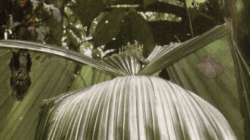
Photo 2: Group of Artibeus watsoni (left) and a hornet (right), Costa Rica (Rodríguez et all. 2007).
The work of Cholewa and collaborators (2001) studies these types of refuges from the botanical perspective. The research evaluated the damage that can be caused to the plant by building a bat tent, observing the vascular anatomy and water flow in the modified leaves of Cryosophila warcsewiczii, Heliconia pogonantha and Manicaria plukenetii. These authors concluded that the flow of water and nutrients in the leaf is not significantly disrupted. This is pointed out as a key factor in the success of bats using this type of shelter. As they do not significantly harm the leaf of the plant continues to be green offering the benefit of camouflage. On the other hand it is believed that the plant receives the benefit of fecal fertilization with a very low cost in resources so it could be considered a symbiosis. But more studies are needed to ensure this. The reason I decided to talk about bats tents on the blog is that we found one a couple of days ago near the pool. Usually you see them on the Cabalonga trail or in the area of the mysterious trail but this time it is in a place that we visit a lot. Some bats have chosen a plant of the species Calathea lutea and they have decided to build a house.
Bats seem to belong to the specie Artibeus watsoni, but to be sure we would have to capture them and destroy the tent in the process, so we prefer to live with the doubt. Because the tent is at a certain height the photos in detail are very difficult by the contrast of lights, but we leave a few photos for you to observe in detail. Especially as they have made the cut in the leaf, the holes to be able to grasp easily and the presence of a small wasps nest a few inches from the leaf.

Photo 3: Bat tent, photo taken by Alberto Rico
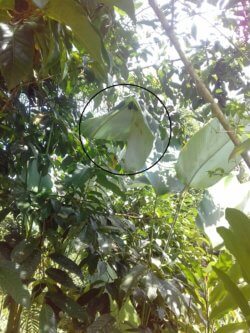
Photo 4: Bat tent seen from the ground, photo taken by Alberto Rico
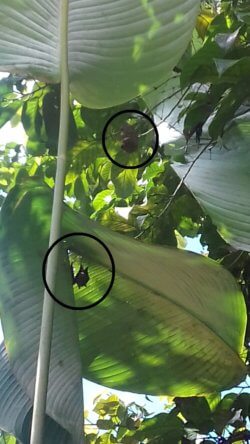
Photo 5: Bat tent and hornet, a defense mechanism, photo taken by Alberto Rico
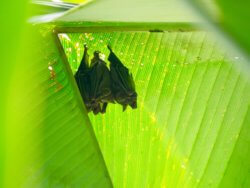
Photo 5: Bats in detail, photo taken by Thomas Newmark
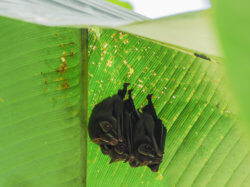
Photo 6: Bats in detail, photo taken by Thomas Newmark
If you liked the story leave us comments letting us know if you want to know more information about the bats builders and their life here at Finca Luna Nueva. Have a good day.
Cited bibliography:
Cholewa, E.; Vonhof, M.J.; Bouchard, S.; Peterson, C.A.; Fenton, B. 2001. The pathways of water movement in leaves modified into tents by bats. Biological Journal of the Linnean Society 72: 179-191.
Gardner, A.L. 1977. Feeding habits. Pp. 293-350. In: Baker, R.J.; Jones, J.K., Jr.; Carter, D.C. (eds.). Biology of bats of the New World family Phyllostomatidae. Part II. Special Publications, Museum Texas Tech University 13: 1-364.
Kunz, T.H.; Lumsden, L.F. 2003. Ecology of cavity and foliage roosting bats. Pp. 3-89. In: Kunz, T.H.; Fenton, M.B. (eds.). Bat ecology. Chicago, The University of Chicago Press.
Rodríguez, B., Medellín, R. A., & Timm, R. M. (2007). Murciélagos neotropicales que acampan en hojas. Editorial INBio.
Simmons, N.B. 2005. Order Chiroptera. Pp. 312-529. In: Wilson, D.E.; Reeder, D.M. (eds.). Mammal species of the world: A taxonomic and geographic reference. 3 ed. Baltimore, Maryland, Johns Hopkins University Press.

